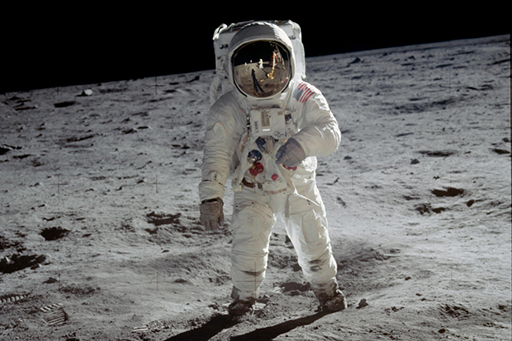2.1 What’s it like on the Moon?
The environment of the Moon is very different from that of the Earth. The force of gravity is a lot less, and temperatures are extreme, varying between −153 °C at night and +123 °C in the day.
Gravity is an attractive force between all objects, but is only noticeable if at least one of the objects is significantly large. For two objects, the force of gravity exerted on one object is proportional to the mass of the other and inversely proportional to the square of the distance between the two objects. If you (one object) are standing on a planet or moon (the other, more massive object), this distance is the radius of the body. The Moon has a mass around one-eightieth the mass of the Earth. Combining this with the smaller radius of the Moon, the force of gravity on an object on the Moon’s surface is around one-sixth of the force of gravity on an object on the surface of the Earth.

